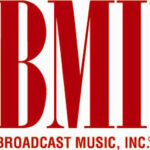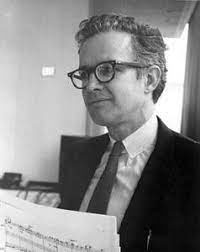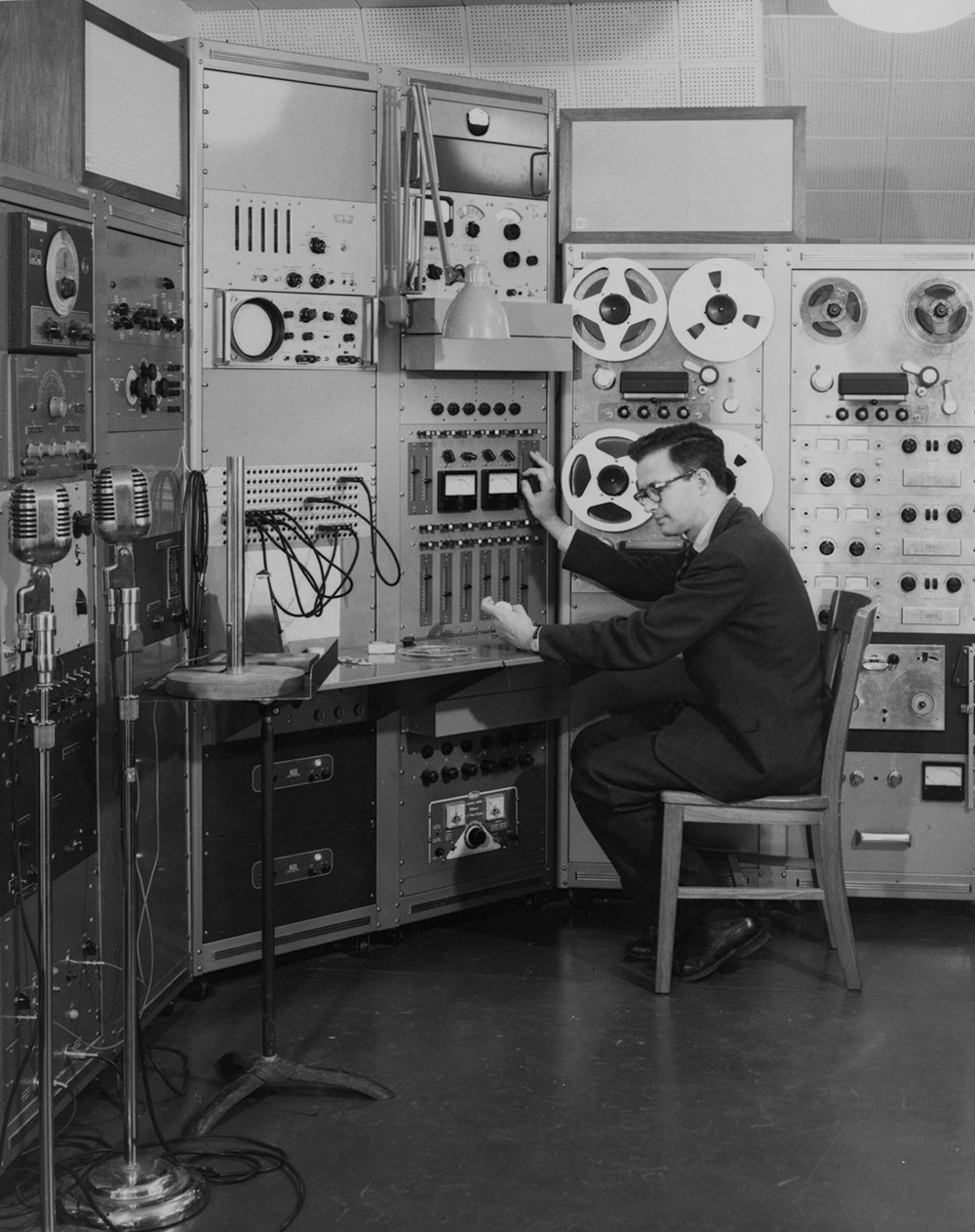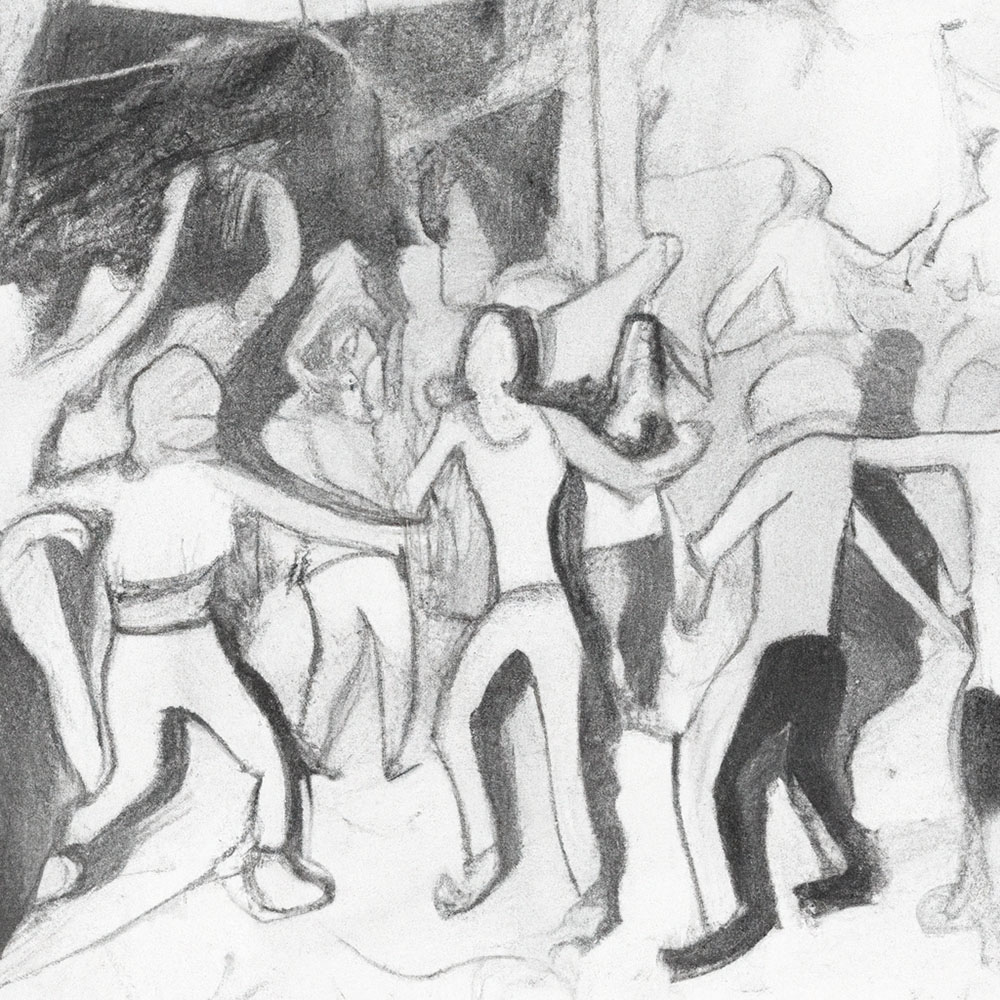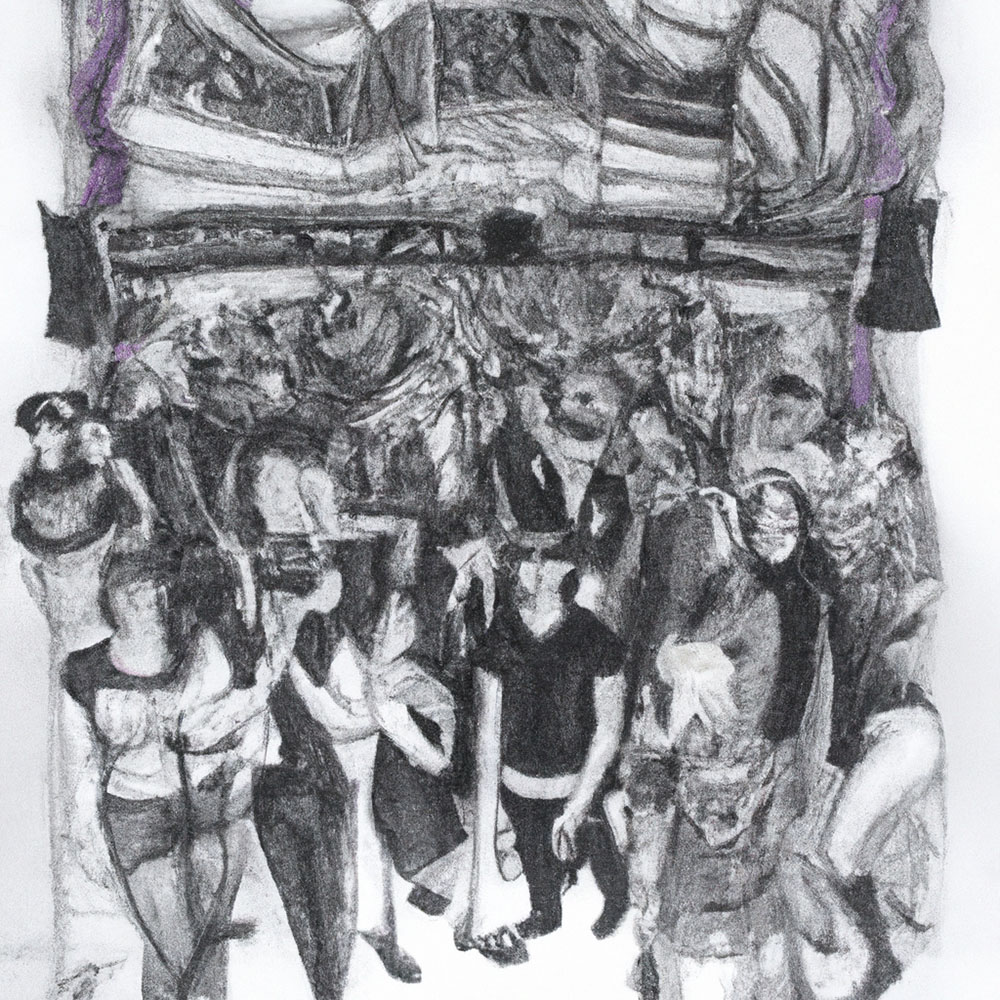
1. What do you know about ASCAP?
* What is ASCAP?
* How was it formed?
* What’s going on today?
What is ASCAP, and why should you care?
ASCAP (American Society of Composers, Authors, and Publishers) is a performing rights organization representing over 800,000 music creators. This global organization helps members across the world to showcase their creative works and take advantage of exciting new opportunities. ASCAP hosts lots of great events throughout the year — helping members to showcase their talents and make valuable connections with music publishers, record labels, music supervisors, and other industry professionals.
How was ASCAP formed and founded?
ASCAP was founded in 1914 by a tight-knit group of songwriters. From the outset, the organization was established to protect the rights of musicians and ensure fair compensation. At the time, many music publishers were exploiting songwriters by taking ownership of songs and failing to pay proper royalties. ASCAP was created to solve a growing problem.
It acted as a central hub to collect performance royalties for songwriters. It quickly became the leading performing rights organization (PRO) in the United States, representing thousands of songwriters and music publishers. Over the years, ASCAP has been involved in numerous legal disputes with broadcasters, music venues, and other organizations.
ASCAP fights to help music creators get fair compensation.
In recent years, the rise of streaming services and digital music has created new challenges. In this new online environment, the organization continues to work with songwriters and publishers to ensure fair payment. Today, ASCAP remains one of the most important organizations in the music industry.
ASCAP forms a vital link between songwriters and the business world.
What’s going on today with ASCAP?
ASCAP is just as relevant today as it ever was. It continues to present exciting new showcasing opportunities, including the “I Create Music” EXPO. This event is one of the largest music creator gatherings in the world. The EXPO unites music industry professionals, songwriters, composers, and producers in a collaborative and creative environment.
The EXPO is about:
* Sharing knowledge and learning
* Collaboration and networking
* Showcasing music and talent
* Offering feedback and advice
* Career development opportunities
ASAP networking events are designed to bring members and music industry professionals together. It’s about expanding professional networks; meeting supervisors, labels, and executives; and speaking with other music creators to build connections and advance careers.
Along with the “I Create Music” Expo, ASCAP hosts several other great experiences:
* The Fran Morgenstern Davis Songwriting Workshop helps creators to collaborate and work on their craft.
* The ASCAP Awards is about honoring special music achievements and industry contributions.
* The ASCAP Latin Music Awards helps to recognize Latin music creators for their contributions to the industry.
Overall, ASCAP showcasing opportunities and networking events are designed to help music creators showcase their talents, network with industry professionals, and build sustainable careers. By attending these events, music creators can receive feedback on their work, gain exposure to new audiences, and build valuable professional connections.
2. What do you know about BMI?
* What is BMI?
* BMI’s background
* Latest BMI news
What is BMI, and why should you care?
BMI is one of the largest performing rights organizations (PROs) in the world. This one entity represents over 1.1 million songwriters, composers, and music publishers. It collects and distributes royalties for public music performances everywhere, from radio and television to live music, restaurants, and other venues.
BMI’s mission is clear –
To help its members earn a fair and equitable share of money generated through music.
BMI’s background and base
BMI has a long history as a PRO. Founded in New York City in 1939, it was created to recognize specific works of art and address the inherent limitations of ASCAP (American Society of Composers, Authors, and
Publishers). ASCAP dominated the music licensing landscape at the time, and its strict rules were not always helpful.
BMI’s co-founders were the composer and publisher William R. Evans and the radio executive Sumner M. Redstone. While they initially struggled to gain acceptance from the music industry, they quickly gained support from independent publishers and songwriters who wanted to earn money from their work.
The creative community soon fell in love with BMI, with this new service managing to suit the needs of many composers and publishers. BMI was formed as an alternative organization, and it welcomed all types of music. At an exciting time when new genres seemed to be formed almost every year, BMI was very much on the front foot.
In the years that followed, BMI grew rapidly and became a major player in the music industry.
The latest BMI news
Today, BMI licenses provide public performance rights to more than 15 million musical works from across the world. These licenses are incredibly powerful, collecting and distributing royalties for the use of music across a variety of media platforms. From traditional radio and television distribution to online streaming and other digital channels, BMI remains a strong industry body.
BMI now represents over 1 million songwriters, composers, and music publishers across all genres of music.
3. What do you know about SoundExchange?
* What is SoundExchange?
* SoundExchange and the digital revolution
* Current vibes and future news
*What is SoundExchange, and why should you care?
SoundExchange is a relatively new performing rights organization (PRO) that specializes in the digital music ecosystem. It collects and distributes digital performance royalties for musicians and record labels. It deals with sound recordings on a number of digital platforms, including Pandora, SiriusXM, and rBeatz, among others.
Digital music has grown exponentially in recent years, and SoundExchange is on the cutting edge of the revolution. It plays a vital role in helping to protect musicians and sets up deals between creatives and labels to ensure fair and equitable compensation.
SoundExchange and the digital revolution
SoundExchange is an emerging PRO founded in 2000 in response to the proliferation of digital music around the world. Before it was founded, performers and record labels were not being compensated for their music on webcasts, satellite radio, and other digital platforms. The valuable work performed by SoundExchange is the result of legal changes introduced in the 1990s.
* The Digital Performance Right in Sound Recordings Act. Passed in 1995, this act gave performers and record labels the right to receive royalties for the digital transmission of their music.
However, despite the introduction of this new legal framework, there was no organization in place to collect royalties and distribute them to the rightful parties. SoundExchange was formed to fill this gap, acting as an intermediary between digital platforms and music creators. The organization collects royalties from digital platforms and distributes them to performers and record labels across the globe.
Over the years, SoundExchange has expanded into new territory to fill gaps in the licensing and distribution market. Among other services, it offers international collection and distribution, advocacy for music creators, and industry collaboration alongside global partners.
Today, SoundExchange:
* Represents over 230,000 artists and record labels
* Has paid out over $7 billion in digital performance royalties
What’s happening right now with SoundExchange?
SoundExchange continues to innovate within the digital music ecosystem. It occasionally holds contests and giveaways for musicians, including opportunities for artists to win free recording equipment and other prizes.
Keep an eye on the SoundExchange website and social media channels for upcoming contests and promotions.
Musicians can register with SoundExchange to protect their digital performance royalties. This service covers music played on internet radio, satellite radio, and other digital platforms in the US. In addition, SoundExchange offers resources and information on how to navigate the digital music landscape and protect your rights as a musician.
4. What do you know about SESAC?
* What is SESAC?
* The history of SESAC
* What’s happening with SESAC today?
What is SESAC, and why should you care?
The Society of European Stage Authors and Composers (SESAC) was established in 1930 as a rival to the dominant performing rights organizations (PROs) of the time. However, while SESAC offers similar services to ASCAP and BMI, it is primarily focused on classical, jazz, and other niche genres of music. This organization offers personalized services to its membership base, which includes songwriters and publishers.
SESAC collects and distributes royalties for public music performances, including radio, television, live music, and more.
The history of SESAC
In the early years, SESAC struggled to gain the same level of recognition as its larger competitors. It faced numerous legal battles over its licensing practices and took a while to achieve real market impact. In the 1990s, however, SESAC began to experience significant growth, acquiring a number of smaller PROs and expanding its membership base.
What’s happening at SESAC today?
Today, SESAC represents a diverse group of songwriters and publishers across a variety of genres. While it remains true to its classical and jazz roots, it also focuses on country, hip-hop, pop, and other music styles. The organization has also expanded internationally, establishing offices in the UK and other countries. In recent years, SESAC has been at the forefront of technological advances, partnering with companies to develop new platforms for digital music distribution and collection.
Above all else, SESAC is known for its personalized service and hands-on approach.
5. PROs and the modern musician
Performing rights organizations (PROs) are important to every modern musician. Inadequate payment for music can have significant consequences, discouraging musicians from pursuing their creative work and driving them away from the industry.
* A strong network of PROs is critical to help protect and nourish musicians.
* A reliable network of PROs is integral to the sustainability of the industry.
Regardless of genre or experience, music creators rely on these organizations to process their rights and payments efficiently.
ASCAP, BMI, SoundExchange, and SESAC are integral to the current health and future viability of the music industry. They play a critical role in ensuring that all music creators are paid fairly, protecting their rights and allowing them to keep working. Through their tireless work, these PROs have made significant contributions to the advancement and promotion of music in the US and across the world.
6. The Illiac Suite and the history of AI music
What is the Illiac Suite?
The Illiac Suite is a groundbreaking computer-generated musical work created by Lejaren Hille, an American computer scientist and composer.
Who was Lejaren Hiller?
Lejaren Arthur Hiller was a composer and pioneer in the field of computer- generated music. Born on February 23, 1924, in New York City, Hiller was raised by his mother, who encouraged his interest in music from an early age. He went on to study at Yale University, where he received a Bachelor of Music in 1950 and a Master in Music Theory and Composition in 1952.
In the early 1950s, Hiller became interested in electronic music. He began experimenting with the use of computers to generate novel musical compositions. He collaborated with computer scientist Max Mathews on several projects, including one of the world’s first computer-generated music pieces. The Illiac Suite was created using the Illiac computer at the University of Illinois in 1957.
Hiller continued to work in the field of computer-generated music throughout his career, creating a number of innovative pieces using various computer programs and algorithms. He also wrote music for film and television, including the theme song for the CBS Evening News. Hiller received numerous awards and honors throughout his career, including a Guggenheim Fellowship in 1966 and a National Endowment for the Arts grant in 1982. Lejaren Arthur Hiller died on January 26, 1994, in Buffalo, New York, at the age of 69, leaving behind a legacy of pioneering work in the field of electronic and computer-based music.
Who was Leonard Isaacson?
Leonard Isaacson was a mathematician who worked alongside Lejaren Hiller and was a major contributor to the Illiac Suite. He contributed to the piece and project by developing the programming language and algorithms used to run the Illiac I supercomputer. Isaacson worked closely with the computer’s designer, Herbert Hellerman, to create a machine that could solve complex mathematical equations and perform data analysis on a large scale.
Isaacson’s contributions to the project were essential to the success of the Illiac Suite, which had a profound impact on scientific research and the development of early computing technology. With the Illiac I supercomputer, researchers were able to conduct simulations and analyses that were not previously possible. This led to groundbreaking advances in fields ranging from astronomy and physics to economics and social science.
Learn more about the Illiac Suite right here.
The Illiac Suite was one of the earliest attempts to create music using computers, and it has a unique place in the history of computer-generated music. The Illiac Suite consists of five movements, each of which is composed using different mathematical algorithms and computer programs. The five movements are named after the mathematical constructs used for composition:
I. String Quartet
II. Stochatta
III. Mixtures
IV. Poly-Poly
V. Hiller’s Spiral
I. String Quartet
The first movement, String Quartet, uses a mathematical algorithm to generate melodies and rhythms. This material is then played by a virtual string quartet. The music is abstract and unemotional, but it’s also fascinating to hear how the algorithm created such complex and evolving patterns.
II. Stochatta
The second movement, Stochatta, uses a stochastic algorithm to create a rhythmic pattern that is then subjected to various transformations. The result is highly unpredictable music that is both chaotic and strangely mesmerizing.
III. Mixtures
The third movement, Mixtures, uses a technique called timbre synthesis to create the sounds of a variety of instruments. These synthesized timbres imitate flutes, clarinets, and trumpets. The final result is a dense and complex texture of sounds that’s both chaotic and beautiful.
IV. Poly-Poly
The fourth movement, Poly-Poly, is perhaps the most abstract and challenging of them all. It uses a polyphonic algorithm to create layers of sound that are constantly interacting with each other. The end result is a dense and complex tapestry that can be difficult to follow.
V. Hiller’s Spiral
The final movement, Hiller’s Spiral, uses a mathematical algorithm to create a melody that spirals upward and downward in pitch. The result is music that’s both unpredictable and hypnotic. This music has a sense of progression that’s both captivating and exhilarating.
Overall, the Illiac Suite is a remarkable achievement, both as a work of music and as a pioneering effort in the field of computer-generated music. It may be abstract and challenging, but it’s also a fascinating and rewarding listening experience. The Illiac Suite is recommended for anyone who’s interested in the history of music or the intersection of technology and art.
7. History of rave culture — the UK’s gift to the world
Electronic music has changed the world over recent decades. From new instruments and timbres to entirely new ways of organizing sound, it has impacted the music scene like nothing else. Dance music and the culture surrounding it have always been at the forefront of the electronic music revolution.
The first raves were thought to have originated in the United Kingdom in the late 1980s. Widely known as the Second Summer of Love, this colorful new music wave was ignited by a close community and DIY ethos. From suburban bedrooms to urban warehouses and rural fields, acid house had an impact that spread across the entire world.
The exact location of the first rave is not known, but it was probably an abandoned warehouse in London. The rave culture quickly spread across the UK and Europe, later migrating to other parts of the world. The first rave DJs were pioneers who helped to create a unique underground dance scene. From house and techno to trance, drum ‘n’ bass, and jungle, this new music took many forms and was adopted by numerous subcultures.
Some of the most influential rave DJs include Carl Cox, Danny Rampling, Paul Oakenfold, Sasha, Fabio & Grooverider, and Colin Dale. These DJs played a mix of house, techno, acid, and other electronic dance music styles, normally to a packed room of smiling dancers. Their sets helped to define the sound of rave culture and the shape of modern music.
8. 10 positive affirmations to keep you moving forward
1. You are a fantastic problem solver.
2. You are a good listener.
3. You have great attention to detail.
4. You are intelligent and knowledgeable.
5. You are a team player.
6. You have a positive attitude and outlook.
7. You are reliable and trustworthy.
8. You are creative and innovative.
9. You are patient and understanding.
10. You are adaptable and can work in any situation.
Wherever you are in the musical landscape, let’s keep exploring together.
With Love Always,
The rBeatz Radio and Media Team


